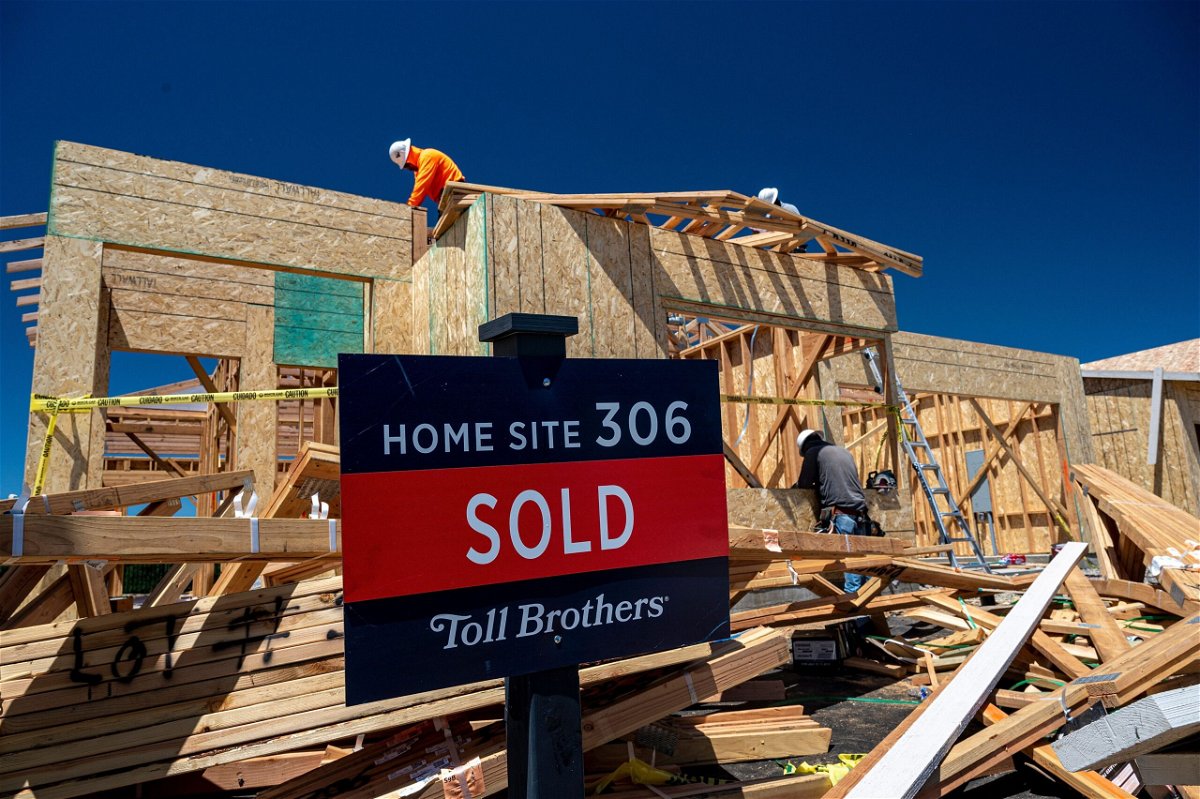New home sales dropped in June after May’s surge

Pictured is a "Sold" sign outside a house under construction at Folsom housing community in Folsom
By Anna Bahney, CNN
Washington, DC (CNN) — New home sales dropped in June from the month before, even as buyers continued to rely on new construction as an alternative to the historically low supply of existing homes for sale.
Sales of newly constructed homes were down 2.5% in June from a revised surge of 6.6% in May, although they were up 23.8% from a year ago, according to a joint report from the US Department of Housing and Urban Development and the Census Bureau.
June’s month-over-month pullback is further evidence that while the new construction market is being boosted by exceptionally low inventory, affordability concerns remain. Homeowners with ultra-low mortgage rates are reluctant to sell and buy another home at a much higher mortgage rate. Sales of existing homes have been down for the past few months, while new home sales have been rising.
Sales of new single‐family houses were at a seasonally adjusted annual rate of 697,000, down from a revised 715,000 in May. Sales were higher than last June’s estimated rate of 563,000.
Mortgage rates reached as high as 6.79% at the beginning of June, according to Freddie Mac, as uncertainty moved through the financial industry due to the debt ceiling standoff. This increase in mortgage rates cooled mortgage applications.
In some good news for buyers, prices of new homes dropped from May, the report showed. The median price for a new home dropped to $415,400 in June, down from $416,300 the previous month.
New home sales boosted by low inventory of existing homes
Although sales were down from May, the trajectory of new home sales is generally positive, said Kelly Mangold of RCLCO Real Estate Consulting.
“Buyer demand remains strong and a limited inventory of resales continues to bolster the new home market,” she said.
Sales were particularly strong in the South and the Northeast.
“Buyers continue to seek additional space for growing families and work-from-home arrangements,” Mangold said. “Companies continue to adjust their expectations around hybrid and in-office work, which is likely to continue to impact housing decisions for years to come.”
New home sales have been strengthened over the past year due to rising mortgage rates that have contributed to a lack of existing home inventory, but the possibility of a recession later in the year may impact this trajectory, she said.
“Especially if mortgage rates decline and more resale inventory hits the market,” Mangold added.
Pipeline of new home inventory
The seasonally adjusted inventory of new homes for sale at the end of June was 432,000. That is a 7.4-month supply at the current sales rate.
By comparison, the inventory of existing homes for sale at the end of June was only a little over 1 million homes. Typically the ratio of existing homes to new homes is 5 to 1, but lately it has been closer to 2 to 1, according to the National Association of Realtors.
“The silver lining for many buyers is that there’s a growing pipeline of new houses coming to market this year, offering a reprieve from the parched scenery of existing home inventory,” said George Ratiu, chief economist at Keeping Current Matters, a real estate insights and analytics company.
The restricted supply of existing homes is a boon for home builders this year.
“Builders are also responding to this shift by bringing slightly smaller homes to market in an effort to meet lower price points and extending financing incentives for cash-strapped first-time buyers or rate-locked homeowners looking to trade up,” said Ratiu. “At the same time, builders continue to face higher materials and labor costs, keeping a lid on how much lower they can go with product prices.”
Looking ahead, home buyers can expect continued improvement in new home supply, especially in markets with the largest number of filed residential permits, such as Houston; Dallas; Atlanta; Charlotte, North Carolina; Austin, Texas; and Orlando, Florida.
“These predominantly Southern markets have experienced a major influx of new residents over the past few years, as many Americans have been attracted to strong local economies, warmer weather, affordable housing, and lower cost of living,” said Ratiu. “We can expect affordability to continue being a central driver of demand for new homes.”
The-CNN-Wire
™ & © 2023 Cable News Network, Inc., a Warner Bros. Discovery Company. All rights reserved.